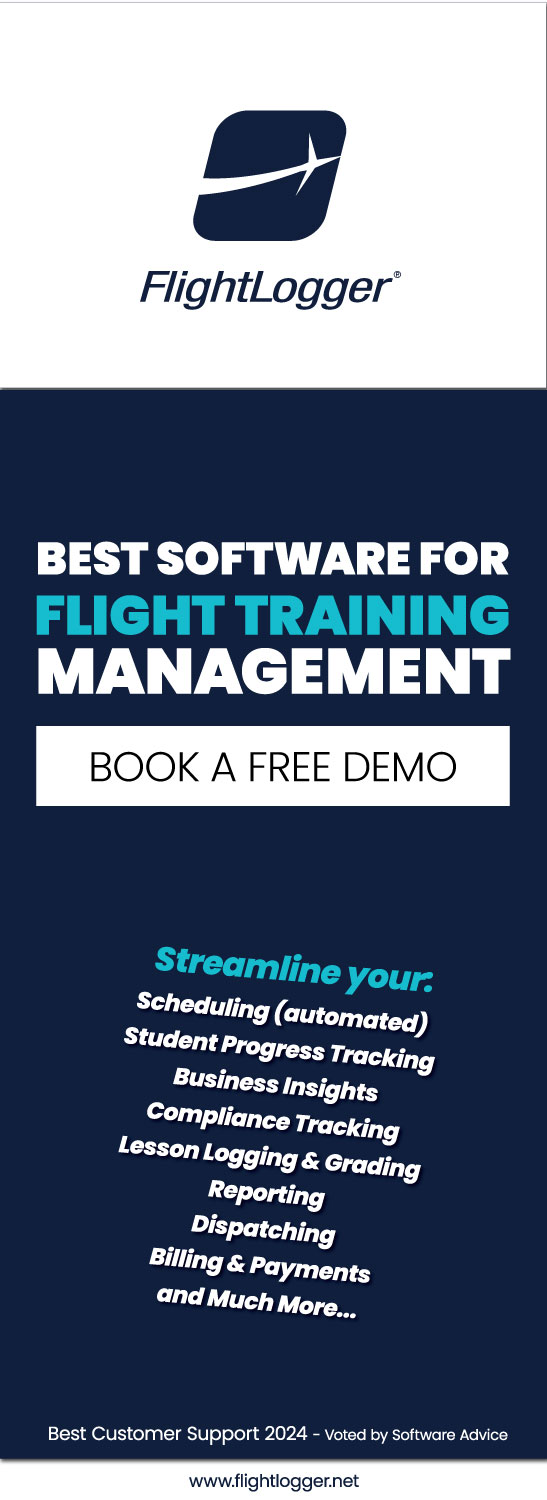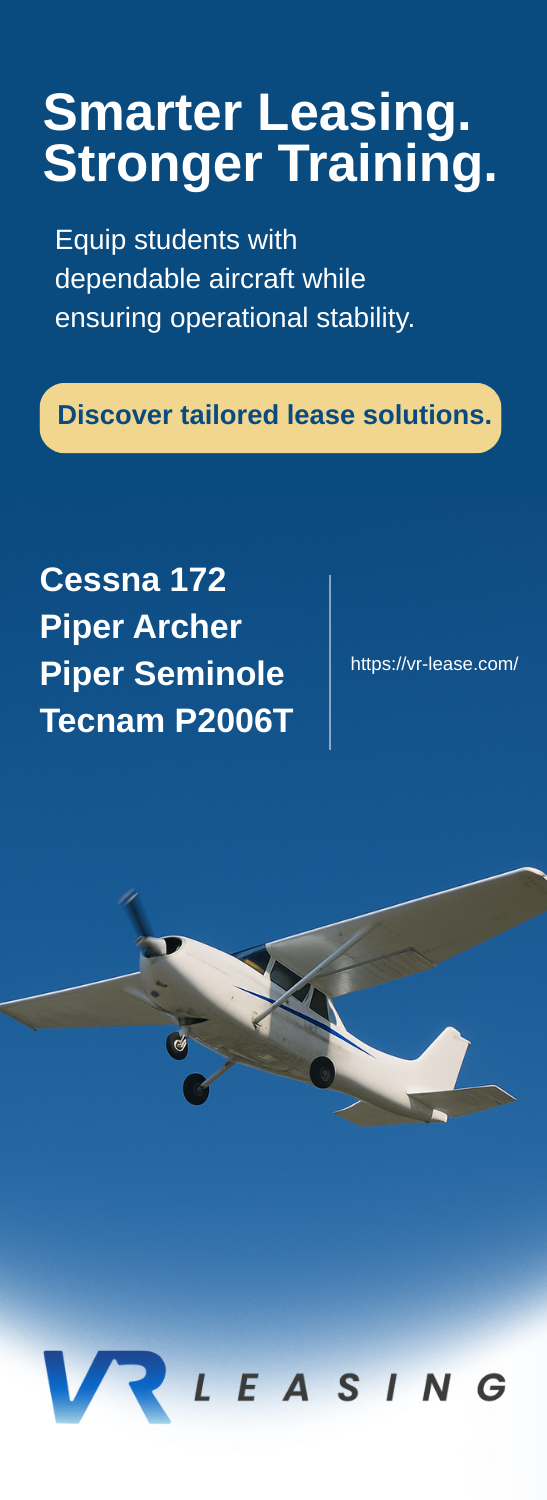Guest Post – Republic Pilot Training Proposal Deserves Thorough Hearing – Future Aviation Aerospace Workforce
Guest Post from Kathryn Creedy – originally published in Future Aviation/Aerospace Workforce News
Future Aviation Aerospace Workforce in its article authored by Kathryn B. Creedy analyzes Republic Airlines’ proposal to FAA of reducing minimum flying hours for airline pilots from 1,500 to 750 in order to cope up with the increased demand as airlines are forced to cut flights due to pilot shortage affecting thousands of passengers.
Check out the full article below:
Findings:
Does the Republic Petition change the requirement a pilot earn of 1,500 hours? No. But it complies with the 2010 legislation and its regulations; provides evidences that its program delivers better pilots in training and on the line; and adopts core competencies for professional airline pilots agreed to by ICAO, IATA and the international Federation of Airline Pilots.
One final question: Does the law or regulation prevent the development of alternate pathways? No, in fact, they encourage it precisely because pilot training should be continuously improved based on new data and technology.
The opposition, by rejecting the Republic petition out of hand, is also rejecting all the aviation rulemaking and safety research and expertise that developed the rule.
Petition Shouldn’t Even Be Controversial
When unions opposed the Republic petition to the FAA to develop an alternative pathway for gaining a Restricted-ATP (R-ATP), it was clear they hadn’t read the petition.
In fact, thorough research reveals, perhaps, for the first time in history, we have a pathway that improves pilot quality, and, for that reason, the petition deserves thorough consideration by both FAA and legislators.
Common sense tells us a company would not invest $30 million to diminish safety or to produce poorer pilots. Common sense also tells us we should never be satisfied with yesterday’s training if adopting widely accepted techniques creates higher quality pilots. We know from ARC reports past training did not produce the quality of pilot we want, and regulations changed but should not stop there.
It’s been nearly a decade since those regulations and we should be demanding a review, given how technology has changed. We also know the loss of skills, discipline and professionalism while building hours seriously undermines safety, according to analysis by Flight Safety Foundation and the Pilot Source Studies. To its credit, the industry significantly increased training to counteract this deterioration but all these factors deserve independent consideration because it could become a template for higher-quality pilots.
Following the Law
To date conversations and solutions surrounding pilot qualifications have been limited to an arbitrary set of hours, the pilot shortage and training costs which is excruciatingly simplistic and counterproductive. Indeed, opposition has misled regulators, legislators and the public while forestalling genuine improvements pilot quality.
The petition was viewed through the lens of airline training experts and international safety authorities who
have defined the widely accepted pathway to produce a high-quality pilot. Balancing that is safety experts who have no agenda aside from developing safer pilots including the National Transportation Safety Board, Flight Safety Foundation and training professionals extolling evidence/competency-based training for the Royal Aeronautical Society (RAeS).
The opposition charged Republic is trying to “circumvent the clear intent of the law.” That simply is not true. Their position rejects the already accepted logic of providing credits for university aviation programs and the military as well as the widely accepted belief that any changes to pilot training should be based on data.
This is no end-run as opposition suggests.
Republic’s petition capitalizes on the regulatory invitation for proposals to develop alternative pathways specifically designed to improve pilot training and develop safer, more qualified pilots.
In its rule, FAA noted “the importance of an aviation curriculum permitting a reduction of hours” as long as it incorporates “aviation coursework above and beyond what is required for pilot certification.” Indeed, Republic’s program is defined by what FAA and industry have already considered and accepted.
Republic’s petition also takes FAA at its word that developing a program going above and beyond pilot certification requirements is worthy of consideration.
The question then becomes is there a way to make better pilots. For the US military the answer is yes, it can train better pilots before giving them hundreds of millions of dollars in high-performance jets to fly. This is important because supervised training methodology of the US Air Force is granted 750 hours credit and is the genesis of Republic’s R-ATP petition when it was revealed by then Air Force Secretary Heather Wilson five years ago.
The First Officer Qualifications Aviation Rulemaking Committee Report researched the best pilot training and its recommendations outline the specific training requiring mastery before certificating a commercial airline, transport category pilot. It went so far as to identify the training that can be accomplished in a simulator/flight training device cautioning that its recommendations for non-aircraft training were in the interest of safety. This is important because ALPA has, astonishingly, rejected sim time in the past. Those recommendations became part of the rule and is incorporated in Republic’s 46-month training and, based on its petition, seems more stringent than what the military has done.
Regulators have already answered the question as to whether a closed-loop, highly structured, advanced training curriculum provides the same level of proficiency as traditional training.
The next question is whether a civilian, airline-specific, mission-driven version should be awarded credit similar the already approved military R-ATP pathway at 750 hours. Republic’s data indicates a higher level of proficiency than those trained in the military or outside of LIFT but that is for the FAA and other safety experts to validate.
But, and this is extremely important, any acceptance of credit hours must come with continuous, data-based analysis to ensure continued competency of a pilot once they join the line as Republic does.
Silly Argument
It is disingenuous of opposition to forward what I think is a silly argument – its insistence that since the law was imposed there have been no accidents – as the opposition does. That is also overly simplistic and ignores the complexity of the interlocking mechanisms that make up the aviation safety ecosystem. It suggests it was only increased hours that did the trick, not other causal factors such as industry-wide safety improvements including safety management systems and more reliable equipment and technology, according to Legal Adviser and JDA Journal Editor Sandy Murdock, who added any statistician will tell you correlation does not equal causation.
But, hey, I’m happy to use that argument to suggest this is a different industry since Colgan and old stereotypes no longer apply. It’s a great argument for suggesting the opposition’s view of the industry is outdated.
Opposition’s response to any pilot quality discussions to hours. For that reason, it is important to revisit this tedious, distracting subject.
I’ve often wondered why ALPA was so stingy on its requirements. Why 1500 hours? The union says experience makes better pilots, but the Colgan accident proved that wrong.
Murdock noted the captain had 3,379 hours of total flying time, including 3,051 hours in turbine airplanes, 1,030 hours as a pilot-in-command (PIC). The first officer had 2,244 hours of total flying time, including 774 hours in turbine airplanes. So, if ALPA wanted a better pilot based on the Colgan accident, why didn’t it choose 3500 hours or even 2500 hours?
The FAA’s and National Transportation Safety Board’s opposition to an arbitrary hourly requirement prompted my suspicion of the legislation and its actual intent which I detailed in a five-part Forbes series.
My suspicion grew because, despite the characterization that 1500-hours is desperately needed for safety, no other safety regulator rushed to copy the FAA. This is ironic since foreign carrier and regional pilots fly into US airspace without a question about their safety or anything to prove they are less safe such as accidents.
Suspicions prompted attendance at the World Airline Training Summit for years to find out what is needed in pilot training and competency. I happily returning to its halls this year where I realized that, while there is a lot of talk about improving training, progress is slow. We always seem to be on the cusp of adopting evidence/competency-based (EBT/CBT) training but never get there despite the fact it’s accepted around the world. News flash, it’s not the hours, it is the quality of the training and the quality of the airline-oriented experience in time building.
Do Your Homework
The fact is pilots supporting the 1500 hours have not done their homework and know they are on shaky ground when it comes to debating. Indeed, they don’t debate at all.
Many mainline pilots and airline trainers tell me the key to increasing pilot quality is selection which today is little more than a credit card. In addition to stringent selection and testing, experts suggest constant data-based monitoring of the pilot throughout training and into operations is important to establish competency. Republic has both.
During 40 years covering the aviation industry, the entire industry turned to data analysis to successfully increase safety and is why experts are turning to data to judge the competency of trainees.
In rejecting this data paradigm, opposition wants us to rely on hours, saying any proposal to do otherwise is tampering with the 2010 law and consequent regulation requiring 1500 hours.
Research reveals the Republic Airways Restricted Air Transport Pilot (R-ATP) Program is very much in line with the ARCs’ recommendations, regulations and the general trend of aviation training professionals to move toward more data-driven evidence of not only pilot proficiency but competency. It also reveals there is near universal agreement on what it takes to make a safe, quality airline pilot. Republic’s petition details the many steps a candidate must accomplish during their R-ATP training which mirrors what is required in the pilot certification rule.
No One Suggesting Elimination of 1500-hour rule
It is well known that any discussion of eliminating the 1500-hour rule is a non-starter so the regional industry and Republic gave up on eliminating the 1500-hour rule. The Regional Airline Association stated that emphatically in numerous interviews and Republic Airways reiterated that during a media briefing, saying its proposal was not a reduction in the 1500-hour rule but works within the existing published 1500-hour rule alternatives. It merely wants credit for a highly structured training program for which the military is already receiving credit.
Nor did Republic develop its program in a vacuum. It conferred with both the military and FAA for feedback to improve its program. It also conferred with its pilots and its safety committee along with partners American, Delta and United, for which it flies.
The question is whether the FAA and legislators are serious about recognizing modernized training programs that improve safety, making way for new pathway programs to address the training gridlock we have today. Or, will the opposition continue to stand in the way of pilot training improvements.
Republic was gutsy enough to take the 2010 law and FAA at its word taking five years and $30 million to create LIFT Academy and gather the data necessary to prove its training delivers better pilots.
Changes Needed to Pilot Training
Mindless opposition suggests pilot training should be static and never change. No one believes that. Pilot training has come a long way in the last decade especially with new training technology and immediate data analysis and assessments improving pilot competency. The industry would be irresponsible if it didn’t insist on continuous changes, based on data analysis and safety, not on some gut feeling, politics and emotions.
Data from LIFT indicates a superior result, but it is up to safety experts and the FAA to validate its conclusions.
In its petition, it stated historical data suggests LIFT students going through Republic R-ATP meet or exceed the level of safety of the military R-ATP. Historical first time and total pass rates for LIFT students on DPE check rides are above the national average or well above the national average.
Using AQP line performance data, Republic also compared LIFT graduates with non-LIFT graduates with data showing they out-performed non-LIFT pilots. LIFT Academy graduates consistently exceeded safety standards in line performance, qualification and continuing qualification training.
Improving Training
Training experts want to see a regime based on data proving pilot competency is so good they will do the correct things in scenario-based training every time, not just during the check ride. The quality of a pilot should never be judged on one subjective pass-or-fail test because we’ve seen too many pilots passed along with disastrous results leading to accidents at American Eagle, Colgan, Continental and Atlas.
Indeed, that is why we have the Pilot Records Database, perhaps the most important aviation safety advance to come out of the 2009 Colgan accident. This despite the fact it took nearly three decades since it was first recommended by the NTSB and more than a decade since the 2010 legislation to be turned into an actual rule all while we’ve been arguing over how many hours it takes to make a pilot. It relies on data, but a robust process is, sadly, still in the making.
Training experts just want an objective measure of student performance rather than judging pilot quality solely on the subjectivity of an instructor. We need both. This is so important, according to the WATS speakers, that airlines are tapping aircraft data streams to determine whether what is being taught on the ground and in the simulator is happening in the skies. After determining it is not, they revise training programs using data in the spirit of Safety Management Systems continuous improvement philosophy. All that is going into developing better training programs for higher quality pilots and really makes debates about pilot shortages and time building silly.
“With the perspective of more than 70 years spent focused on aviation safety–related research, education and advocacy, Flight Safety Foundation believes that a pragmatic, data-driven approach to pilot training is essential to the continued improvement of the industry’s safety performance,” said the organization in its 2018 position paper. “The industry needs to embrace, and national civil aviation authorities need to have the flexibility to adopt, competency- or evidence-based training methods that target real-world risk and ensure a progressive and satisfactory performance standard. It cannot be assumed that critical skills and knowledge will be obtained only through hours in the air.”
In fact, Flight Safety Foundation indicated we are asking the wrong questions when it comes to pilot training. We should be asking whether what we are doing will achieve the levels of safety required to meet the growth demand. As thousands of flights are cancelled; as communities lose air service and as airlines scramble for schedule reliability, the clear answer is no.
FSF also asked whether we are using technology, data and experience to maximize training efficiency. Finally, it asked whether we can maintain a sustainable quantity and quality of pilots from our current approach. That answer is also no.
About Producing Better Pilots
Most conversations about pilots start and stop with whether or not there is a pilot shortage and I’ll admit I’ve been lured down that distracting rabbit hole. To be sure airports and airline revenues and growth are feeling the pinch on not having enough pilots, but I think that reducing the entire conversation to economics does a disservice to the serious topic at hand. Worse, the pressure put on pilots is prompting concerns about fatigue which may be compromising safety.
What matters to me is the efficiency and quality of airline pilot training and the blockade forestalling any meaningful aviation training reform, even if it produces better pilots.
While I’ll let the FAA decided on the value of the Republic petition, it seems an important opportunity to improve pilot training and create a boilerplate for other airline academies including those used by the major carriers.
The FAA should not dodge its responsibility because Republic has played by the rules and isn’t asking for anything that hasn’t been considered and granted before. To shirk its responsibility based on mindless opposition could keep us from improving pilot training.
What I can judge is the investment and work dedicated to this effort in solving a long-term, systemic problem is worthy of consideration. If you oppose Republic’s petition then I suggest you do your homework. I have.
Source: Future Aviation Aerospace Workforce | Kathryn B. Creedy
Check our Terms and Conditions for our Content Policy.

You may also check our Terms and Conditions for our Content Policy.
Searching for specific information – kindly contact us to see if we can assist you.
Check out the more than 18054 relevant pilot training industry updates here.




